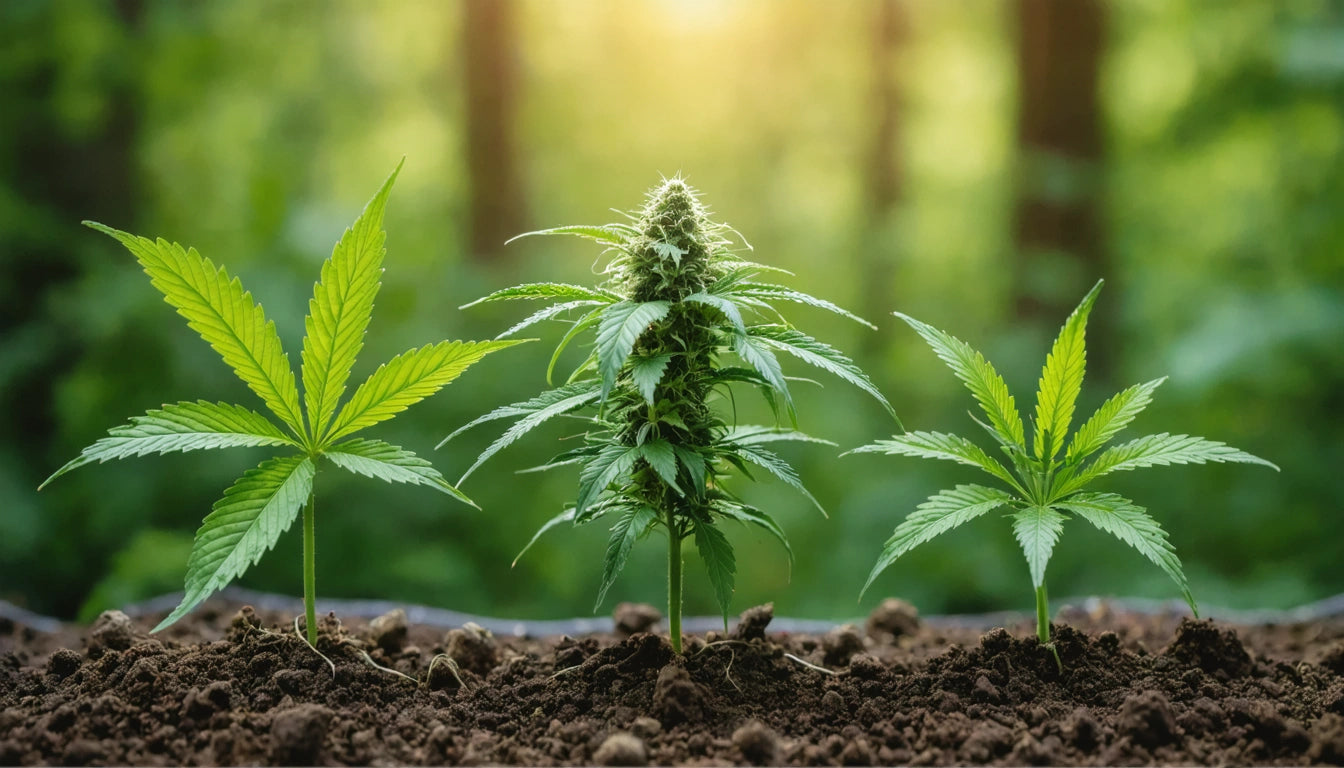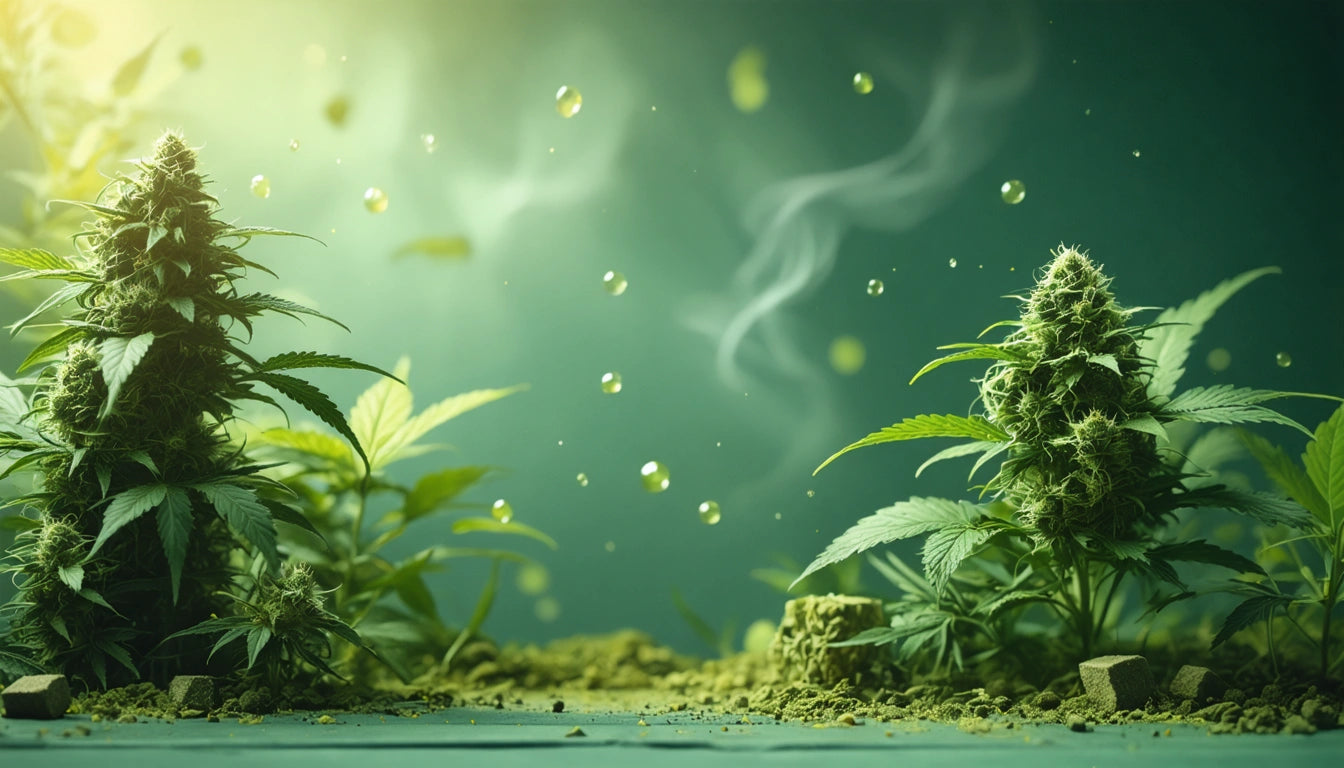Table of Contents
Comprehensive Guide to Fertilizing Cannabis and Potted Plants Naturally
Proper fertilization is essential for growing healthy, high-yielding cannabis plants. Whether you're cultivating cannabis or other potted plants, understanding how to fertilize effectively can make the difference between mediocre results and exceptional harvests. This guide covers everything from how to make fertilizer naturally to establishing the right fertilization schedule for cannabis and other container plants.
Understanding Cannabis Fertilization Needs
Cannabis has specific nutritional requirements that change throughout its growth cycle. According to our guide on choosing the best fertilizer for cannabis, plants need different nutrient ratios during vegetative and flowering stages.
The three primary nutrients cannabis requires are:
- Nitrogen (N): Essential for leaf and stem growth during the vegetative stage
- Phosphorus (P): Critical for root development and flower production
- Potassium (K): Supports overall plant health and disease resistance
Secondary nutrients like calcium, magnesium, and sulfur, along with micronutrients such as iron, manganese, and zinc, are also vital for complete plant nutrition.
Natural Fertilizer Options for Cannabis
Natural fertilizers offer several advantages over synthetic options, including improved soil health, sustainable sourcing, and reduced risk of nutrient burn. Some effective natural options include:
Compost
Compost is often called "black gold" for gardeners. Rich in organic matter and beneficial microorganisms, it provides a balanced mix of nutrients while improving soil structure and water retention.
Worm Castings
Worm castings are a mild, slow-release fertilizer that won't burn plants. They contain beneficial enzymes and microbes that enhance soil health and plant resilience.
Bat Guano
High in nitrogen and phosphorus, bat guano is excellent for both vegetative growth and flowering. It's particularly valuable during the transition to flowering.
How to Make Fertilizer at Home
Learning how to make fertilizer at home can save money while providing tailored nutrition for your plants. Here are three DIY fertilizer recipes:
Compost Tea
To make compost tea:
- Fill a cloth bag with finished compost
- Submerge in a bucket of water
- Add 1 tablespoon of unsulfured molasses
- Aerate with an aquarium pump for 24-48 hours
- Dilute the finished tea 1:4 with water before application
Banana Peel Fertilizer
Banana peels are rich in potassium, making them perfect for flowering plants:
- Dry banana peels completely
- Grind them into a powder
- Mix 1-2 tablespoons into the top inch of soil
Eggshell Calcium Supplement
Eggshells provide calcium to prevent deficiencies:
- Rinse and dry eggshells thoroughly
- Bake at 200 °F for 10 minutes to sterilize
- Grind into a fine powder
- Apply 1 teaspoon per gallon of soil
How Often to Fertilize Cannabis
Determining how often to fertilize cannabis depends on several factors, including growth stage, growing medium, and the type of fertilizer used.
Seedling Stage (Weeks 1-2)
Seedlings are sensitive to nutrients. During this stage:
- Avoid fertilizing for the first 1-2 weeks
- If using pre-fertilized soil, no additional nutrients are needed
- For seedlings in inert media, use ¼ strength nutrients after the first true leaves appear
Vegetative Stage (Weeks 3-8)
During vegetative growth:
- Organic soil growers: Apply top dressings every 2-3 weeks
- Liquid fertilizer users: Feed every other watering at ½ to full strength
- Hydroponic systems: Change nutrient solution weekly
Flowering Stage (Weeks 9-12+)
As noted in our seed-to-harvest guide, flowering plants need:
- Higher phosphorus and potassium levels
- Reduced nitrogen to prevent leafy, low-potency buds
- Feeding every 1-2 weeks, depending on soil quality
Always monitor your plants for signs of over or under-fertilization and adjust accordingly.
How to Fertilize Potted Plants Effectively
Container plants have specific needs that differ from garden-grown plants. When learning how to fertilize potted plants, consider these factors:
Limited Root Space
Potted plants have restricted root zones, making proper fertilization crucial. Our guide on fertilizing pot plants recommends:
- Using a lighter fertilizer mix to prevent salt buildup
- Applying fertilizer more frequently but at lower concentrations
- Flushing containers occasionally to remove excess salts
Application Methods
Several methods work well for container plants:
- Top dressing: Apply dry amendments to the soil surface
- Liquid feeding: Use water-soluble nutrients for immediate availability
- Foliar feeding: Spray dilute nutrient solution directly on leaves for quick absorption
Measuring and Monitoring Your Fertilizer Application
Accurate measurement is essential for successful fertilization. Too little, and your plants suffer nutrient deficiencies; too much can lead to toxicity and reduced yields.
Tools for Precision
For consistent results:
- Use measuring spoons for dry amendments
- Employ syringes or pipettes for liquid concentrates
- Monitor soil pH regularly, as it affects nutrient availability
- Consider a TDS (Total Dissolved Solids) meter for liquid feeds
Reading Your Plants
Plants communicate their nutritional status through visual cues:
- Yellowing lower leaves often indicate nitrogen deficiency
- Purple stems may suggest phosphorus issues
- Curling leaf edges could signal potassium problems
- Slow growth with dark green leaves typically means overfertilization
Sustainable Fertilization Practices for Long-Term Success
Adopting sustainable fertilization methods ensures continued plant health while protecting the environment. As our comprehensive growing guide emphasizes, building a living soil ecosystem creates a self-sustaining growing environment.
Key sustainable practices include:
- Rotating between different natural fertilizers to provide diverse nutrients
- Incorporating cover crops in outdoor grows to fix nitrogen naturally
- Reusing soil by amending with compost between growing cycles
- Collecting rainwater for irrigation to avoid chlorine and other tap water additives
By understanding how to fertilize cannabis naturally and establishing a consistent schedule, you'll create optimal conditions for healthy plants and abundant harvests. Remember that each plant is unique, so observe closely and adjust your approach based on your specific growing environment and plant responses.











Leave a comment
All comments are moderated before being published.
This site is protected by hCaptcha and the hCaptcha Privacy Policy and Terms of Service apply.